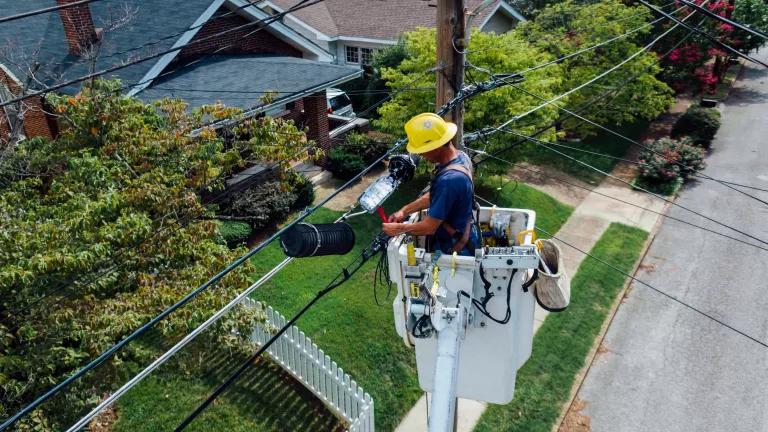
Now more than ever cities must lead when it comes to sustainability and building a clean energy future to protect our health and boost the economy. The City Energy Project is helping cities do just that by creating a network of leadership cities working together to create lasting, positive change in the buildings that make up their skylines.
It was just a year ago that an expansion of the City Energy Project was announced on a global scale at the Paris climate conference, and today we’re releasing the names of the next 10 of the 20 total cities now involved in the initiative that we are co-leading with the Institute for Market Transformation.
CEP focuses on saving energy in the big buildings in urban centers, which is important because of this shocking statistic: If U.S. buildings were their own country they would rank third in the world in energy use.
The importance of local leadership on climate change was hailed at the Paris climate conference a year ago, and cities are of growing importance in the fight against climate change because more than 80 percent of the U.S. population now lives in urban and nearby suburban areas, and urban population centers are growing worldwide.
Americans widely support saving energy and increasing efficiency in our cities’ big buildings, but just how is that done on a large scale when it involves thousands of city officials, businesses, tenants, residents, nonprofits and others?
It’s not easy, but CEP utilizes a hands-on, ground-level approach that brings people together to work toward the cities’ sustainability, climate, energy, economic development, and public health goals. Improving energy efficiency touches each of these areas.
In each participating city, CEP provides capacity, resources and expertise to the local government as well as engages private building owners, local nonprofits, businesses, and many other stakeholders.
This work can achieve real results because the buildings in which Americans live and work account for as much as 60-80% of carbon pollution in urban communities. All told, when the policies and programs are fully implemented in all 20 cities, they will save nearly $1.7 billion in energy costs and avoid 9.6 million metric tons of carbon, or the equivalent of taking over 2 million cars off the road in 2030 alone.
CEP is also an important component in another key aspect of Urban Solutions’ work—prioritizing communities that are hardest hit by climate change, including low-income neighborhoods and communities of color.
City Energy Project’s focus is to drive market transformation in the highest impact building sectors, which in most cities are buildings over 25,000 square feet. But we are realizing that in order to generate true market transformation, we need to ensure that the benefits of our work extend to all communities.
Our renewed focus on what market transformation means aligns with what mayors and other city leaders are also calling for—a greater emphasis on equity in city agendas as they focus on racial and economic disparities.
NRDC and IMT kept equity in mind while we selected this next round of cities, and we continue to research and use innovation in new approaches to ensure everyone enjoys the benefits of energy efficiency, including cleaner air, lower energy bills, economic growth and better health.
Specifically, the project will be examining how to reach underserved communities in the affordable multifamily housing sector, and will be developing approaches to reach owners of older buildings and those with fewer amenities—a sector that is notoriously hard to reach. We expect to develop several equity-based pilots in select cities over the next two years.
Moving forward, our measuring stick will not only be the energy improvements we are able to drive in large commercial office buildings, but also energy reductions and health and economic benefits we can procure in the hardest to reach areas of opportunity in our communities.
The ability to reap the rewards of saving energy needs to be available to all.
Read our press release on this announcement here: http://www.cityenergyproject.org/media/




